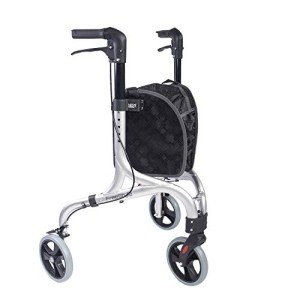5 Killer Quora Answers To Indoor Walker
페이지 정보

본문
The Rise of Indoor Walkers: A Comprehensive Guide
Indoor walkers have become a popular option for individuals seeking to preserve an active way of life within the confines of their homes. These versatile makers cater to a diverse audience, from fitness enthusiasts to those recovering from injuries. This article will explore the basics of indoor walkers, their benefits, types, and some factors to consider to keep in mind before acquiring one.
What is an Indoor Walker?
An indoor walker is a fitness maker created to imitate walking without the need for outdoor space. Unlike traditional treadmills, which mainly concentrate on running and jogging, indoor walkers highlight a natural walking movement. They are equipped with functions that promote stability, support, and convenience, making them appropriate for a vast array of users.

Why Choose an Indoor Walker?
Indoor walkers included a myriad of benefits that appeal to users of any ages and fitness levels. A few of the main benefits include:
- Convenience: They can be utilized anytime, despite weather condition conditions or time, making it simpler to fit workout into a hectic schedule.
- Low Impact: Indoor walkers are developed to lower stress on joints, making them an outstanding option for those with mobility concerns or joint concerns.
- Space-Efficient: Many models are compact and easy to store, fitting into small houses or homes with limited space.
- Range of Workouts: With adjustable speeds and intensity levels, users can tailor their workouts to their fitness goals.
Kinds Of Indoor Walkers
Indoor walkers can be found in various styles, each accommodating various user needs. Here are some of the most typical types:
| Type | Description | Ideal For |
|---|---|---|
| Manual Walkers | Operated by the user, moving the limbs in a walking movement. | Newbies seeking a basic, cost-effective alternative. |
| Motorized Walkers | Equipped with a motor to control speed and slope settings. | Those desiring a more versatile exercise experience. |
| Under-desk Walkers | Compact machines that fit under desks, promoting walking while working. | People working from home aiming to remain active. |
| Recumbent Walkers | Permit users to walk in a seated position, reducing stress on the body. | Older grownups or those with mobility obstacles. |
Secret Features to Consider
When choosing the best indoor walker, a number of functions can affect the general workout experience. Here are some necessary considerations:
- Size and Portability: Ensure it fits your designated workout location and is easily movable if needed.
- Weight Capacity: Check the optimum weight limitation to ensure safety throughout exercises.
- Adjustable Settings: Look for devices that provide adjustable speed and slope settings to personalize your exercises.
- User-Friendly Display: Choose an indoor walker with an easy-to-read display that tracks time, range, calories burned, and speed.
- Convenience Features: Consider cushioned handles, adjustable height, and a sturdy base for improved stability and comfort.
Health Benefits of Indoor Walking
Taking part in regular indoor walking can yield many health benefits:
- Enhanced Cardiovascular Health: Walking boosts heart rate and enhances blood circulation, lowering the threat of heart problem.
- Weight Management: Regular walking, combined with a balanced diet, aids in weight control and can contribute to weight loss.
- Improved Mood: Physical activity releases endorphins, which can assist minimize feelings of anxiety and depression.
- Strengthened Muscles: Indoor walking reinforces the leg muscles and enhances general body coordination and balance.
Setting Up a Walking Routine
To make the most of the benefits of indoor walking, it's vital to establish a constant routine. Here are some suggestions to start:

- Create a Schedule: Dedicate specific times throughout the week for walking. Aim for at least 150 minutes of moderate aerobic activity weekly.
- Warm Up and Cool Down: Always start with a 5-minute warm-up to prepare your body and finish with a cool-down to help recovery.
- Listen to Your Body: Pay attention to how you're feeling. If you experience discomfort or pain, stop and assess your body's needs.
Often Asked Questions (FAQs)
Q: How much area do I need for an indoor walker?A: Most indoor walkers are compact and need a small footprint. It's recommended to have at least 6 to 8 square feet offered for a safe workout location. Q: Can indoor walkers be used by olderadults?A: Yes, indoor walkers are exceptional for older grownups as they supply low-impact exercise while promoting stability and mobility. Q: Do I require a health club membership if I have an indoor walker?A: No, having an indoor walker allows you to participate in cardio exercises in the house, negating the need for a fitness center subscription for walking exercises. Q: How do I keep my indoor walker?A: Regularly look for loose screws, tidy the maker after use, and follow the maker's standards for particular upkeep schedules. Q: Are indoor walkers appropriate for rehabilitation?A: Yes, numerous indoor walkers are designed to support rehabilitation, especially for clients recovering from surgical treatment or injury. Constantly seek advice from with a healthcare professional before starting a brand-new workout program. Indoor walkers offer a hassle-free and effective method to integrate exercise into everyday life. With their numerous health benefits, user-friendly styles, and flexibility, they are an excellent investment for anyone seeking to enhance their
fitness levels in the convenience of their home. By comprehending the different types of indoor walkers, crucial features to think about, and the health benefits of walking, people can make educated choices that align with their fitness goals. With devotion and the ideal equipment, remaining active has never been simpler.
- 이전글Are You Getting The Most Of Your Counterfeit Money Online? 25.07.22
- 다음글Guide To Emergency Break-In Repair: The Intermediate Guide On Emergency Break-In Repair 25.07.22
댓글목록
등록된 댓글이 없습니다.

